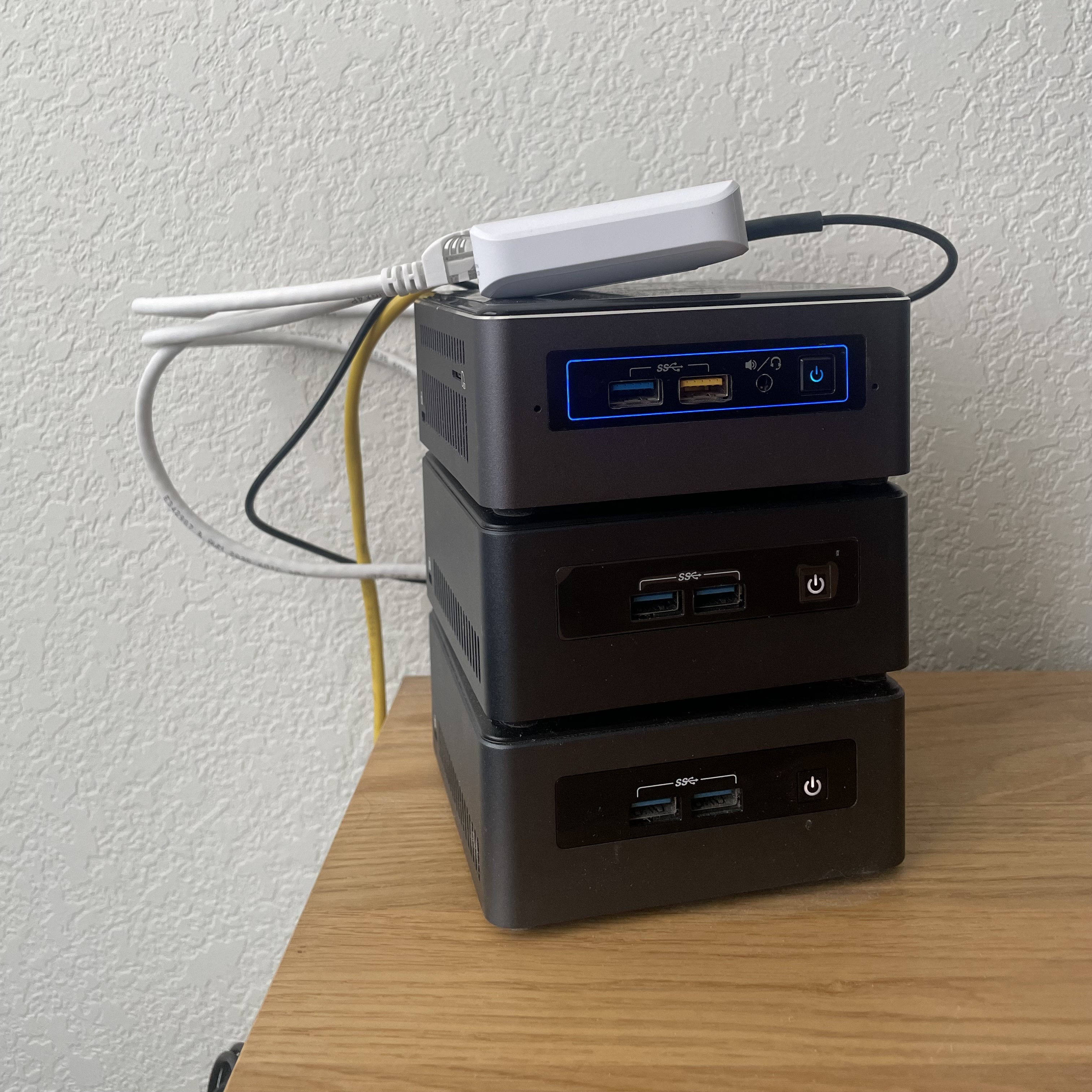The Solar Powered Kubernetes Cluster
This post is the first part in a series. The purpose of this series is to show that on-prem/private cloud/self-hosted kubernetes doesn’t have to be hard and you don’t have to make too many compromises.
Things that are hard in on-prem kubernetes
- Storage
- Networking
- LoadBalancers
- and by extension: Ingress
- Control Plane Access
- Cluster Autoscaling
- Bootstrapping new nodes
The Golden Rule of High Availability
One is none and 3 is one
This is an oversimplification, but for most high availability platforms, algorithms, and tools the minimum number of members you might want in a cluster is 3, as this allows the failure of one node while still allowing quorum. You will see this reflected in much of the architecture that follows.
The hardware stack
At its core, the hardware stack is comprised of  . Over the years, this NUC cluster has taken a few evolutions, such as a separate corosync network, but I’ve since simplified it.
. Over the years, this NUC cluster has taken a few evolutions, such as a separate corosync network, but I’ve since simplified it.
The solar setup
Right now, my house has solar panels on its roof. I don’t currently have whole home batteries, so part of the cluster runs on batteries, and the other part will power off when I am not producing solar in excess of demand. This is by design, to inject chaos into the cluster. Think of it like Spot instances on your cloud provider.
Cluster Design Philosophy
This cluster follows a gitops philosophy. This means that the application state will be completely driven by what you see in git. There may also be some gitops-style terraform run from argo workflows.